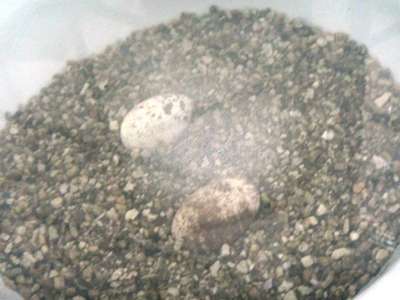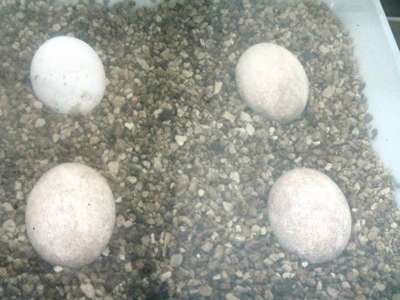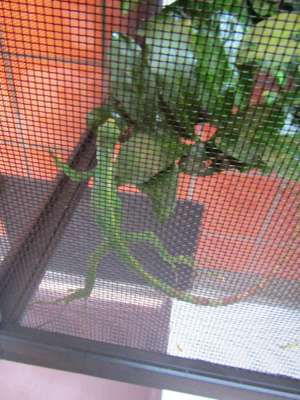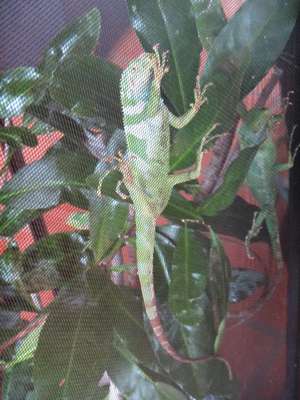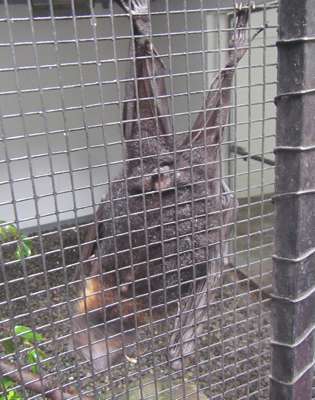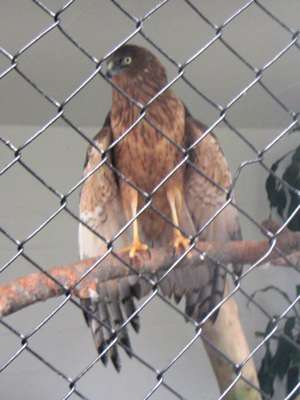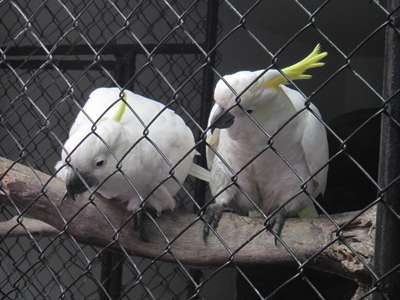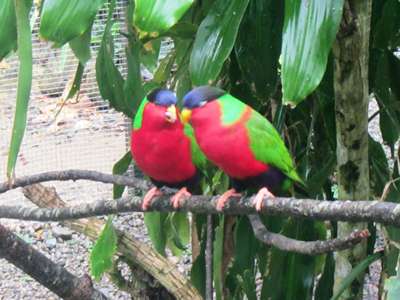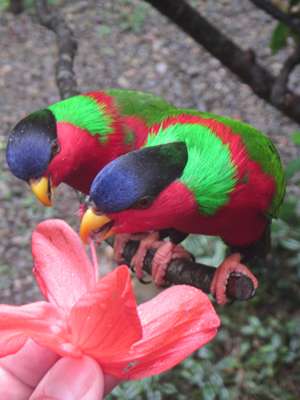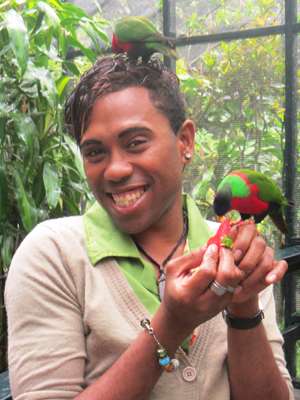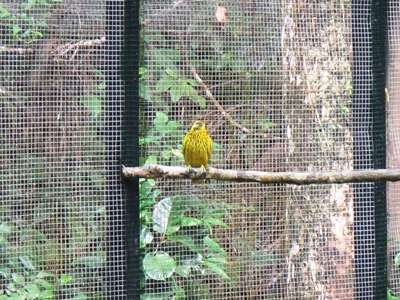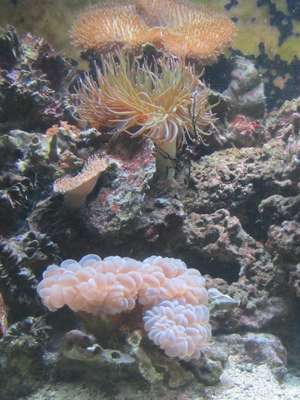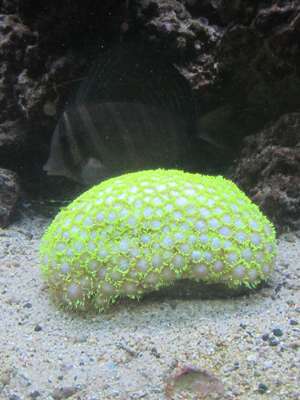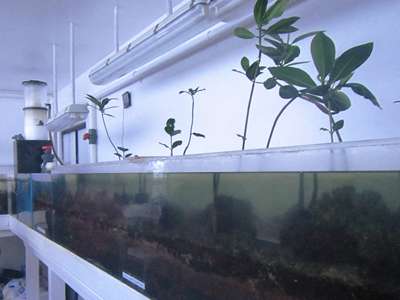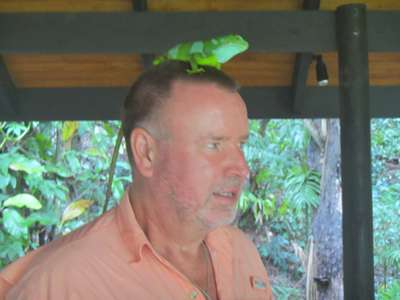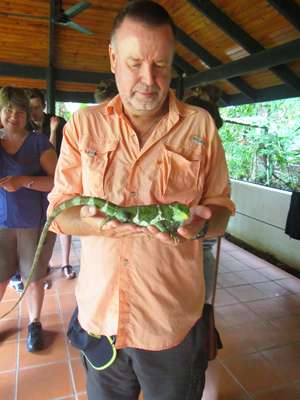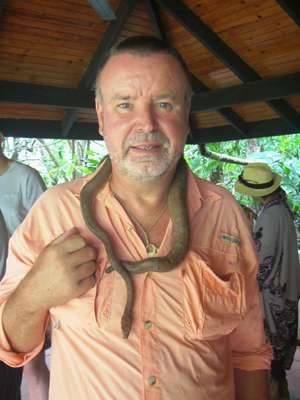Kula Eco Park

Sunday 16th August 2015 Unfortunately, the weather had changed overnight, and this morning it was raining. Not just a shower, but the kind of rain that is set in for the day. Oh dear. With hindsight it would have been sensible to check the weather forecast before making plans for outdoor activities, but the weather had been good for long enough to make us forget to do so. Oh well, we won’t melt. Just need a raincoat.
A very wet and windy scene outside our windows. Off we went to the Eco Park, where we met our guide, Miti. A very personable young chap, he explained the work of the Eco Park first, and then took us on a tour of the park. He was very knowledgeable and explained the exhibits and answered our questions well. The park provides near-natural habitats for some of Fiji’s wildlife, including some endangered species, free hands-on environmental education for Fijian schoolchildren aged 11-13, and has a successful captive breeding programme which recently saw 32 crested iguanas released on the island of Monuriki. This island had seen the steady and rapid decline in the iguana population since the introduction of goats and rats. Years of goat-grazing had destroyed the natural dry forest on Monuriki, the only food source for the crested iguanas, and predation by rats further reduced numbers. On all other islands, this iguana was rare or already extinct. Monuriki was identified as the one most likely to provide a long-term solution to the falling populations of crested iguanas in Fiji, and so in 2009-10 twenty pairs of iguanas were captured and brought to Kula Eco Park for breeding, while steps were taken to remove goats and rats from the island. Monuriki was to become an iguana reserve, and while the breeding programme was carried on at Kula, the natural dry forest habitat was left to regenerate in the absence of grazing goats. http://www.fijiwild.com/crested-iguana So it was with understandable pride that Miti told us of the success of the breeding programme so far. The original 20 iguanas were reintroduced to Monuriki, together with their captive-bred offspring. All are micro-chipped and their progress is being carefully monitored. It is hoped that in the absence of predators and with an ample food supply, nature will take its course and the population will increase. Fingers crossed.
Crested iguana eggs – they have soft shells which expand as the iguana grows inside. They do not need an incubator.
Young iguanas are kept in cages near the egg-incubation room.
An adult iguana. The fruit bats were surprisingly large.
A Pacific Harrier, brought in with a damaged wing. A retired film-star yellow-crested cockatoo and mate.
A pair of Collared Lori – Fiji’s national bird. Very partial to this flower.
Miti demonstrates the friendliness of the birds. The Golden Dove’s call sounds like a dog barking. We moved on to the aquatic section where a large tank housed a variety of fish as well as hard and soft coral. We asked Miti what the coral fed on, and he showed us behind the scenes where a long tank housed a miniature mangrove swamp. The water from the swamp was constantly being circulated through the aquarium. As it passed through, the nutrients in it fed the coral and the fish, and any waste products were filtered out.
The coral and tropical fish garden had a variety of soft and hard corals.
This mini mangrove swamp feeds the coral and fish. The baby turtles were due to be fed, and so we joined a group of people around their tank feeding them tiny shrimps.
The turtles were no bigger than my hand. Back at the main building at the end of the tour, we were given an opportunity to handle a few of the animals, an offer which I declined, but which Steve took up happily.
Fred seemed happy enough on Steve’s head.
Rather him than me! Over a coffee, we signed the Visitors’ book, and made a donation to the children’s education fund. Each year several hundred Fijian schoolchildren visit the Eco Park free of charge, and it is donations that pay for their visits. We felt the Park was doing an excellent job and were happy to support children having the experiences we have had today. It was such an interesting place, we even forgot about the rain! |

